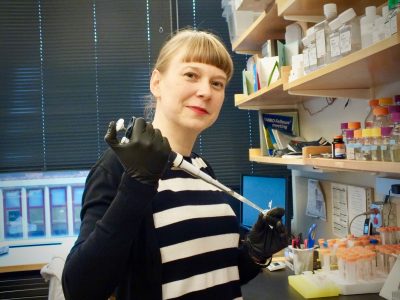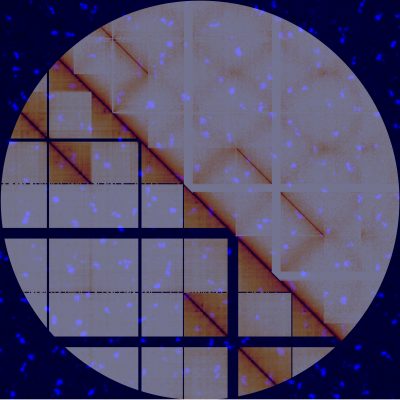
Everywhere we look, everything is different. The Universe itself is filled with galaxies and stars that are patchily distributed. Even mathematics is not immune from diversity as some sets of infinities are larger than others. However, most of the familiar diversity, or heterogeneity we encounter every day is biological, from the people we meet to the common trees seen in our neighborhoods. Therefore, diversity seems a universal foundational principle, especially for the biological world and even its human witnesses. Indeed, each individual human has a genome containing two versions for most of the approximately 25,000 genes distributed over our 46 chromosomes (i.e., two haploid genomes, one each from our biological parents). Amazingly, that chromosomal and genetic diversity adds up to approximately six billion nucleotide base pairs, which is about two meters when stretched out end-to-end. That DNA must fit into a cell nucleus 10 millionths of a meter in diameter. This is no trivial feat, and it requires tremendous amounts of DNA folding, a process that generates remarkable physical structure inside each finitely sized nucleus. However, critical answers remain largely a mystery as little is known about how DNA is “packaged” within the nucleus or how that packaging affects gene expression and its regulation, which must take place in the nucleus as well. Luckily, these vastly important answers are being pursued by one of our newest MCB faculty members Dr. Jelena Erceg.
To find those answers, Dr. Erceg first sought a foundational understanding of how regulation of gene expression occurs, which she embarked upon as an undergraduate researcher at the University of Zagreb, Croatia. There, she did research on DNA methylation of pumpkin chromosomes and wrote a thesis on research that characterized enhancer traps into hox gene clusters. Enhancer traps are a genetic construct containing a transposable element and a reporter gene like LacZ that inserts itself randomly into chromosomes and is used as a proxy for detecting the expression of nearby genes. This molecular biology technique allows researchers to map the location of enhancers (often called transcriptional factors) on chromosomes that hopefully leads to understanding wholesale gene expression patterns across the entire genome. Such knowledge is critical for understanding how a fertilized cell becomes a fully developed animal. Hox genes are important for animal embryo development and determine how, when, and which cells change into different kinds of cells with altered functions.
Dr. Erceg’s undergraduate experience and initial understanding of gene expression eventually led her to a graduate program doing research as a Louis-Jeantet Foundation Ph.D. student in the laboratory of Dr. Eileen Furlong at EMBL in Heidelberg, Germany where she further studied the regulation of gene expression during embryonic development. It was during her time in Heidelberg when she discovered that the same enhancer functions in two different developmentally related tissues, where one enhancer will have a flexible motif and the other a conserved motif. Thus, enhancer sequence variation between individuals, including small deletions or insertions can have dramatic tissue specific effects during development. In a related discovery, Dr. Erceg also uncovered that some regulatory elements have dual activities. Her findings indicate tight regulation of transcription occurs during key developmental transitions, where specific patterns of gene transcription may need to be active in one cell but repressed in another. “Dual elements” says Dr. Erceg “may ensure a finely tuned initiation or silencing of transcription during rapid cell fate decisions,” which are critical to embryonic development.

Dr. Erceg’s undergraduate and Ph.D. research thought of chromosomes and their enhancers as two-dimensional linear objects, which of course, they are. However, as an EMBO Long-Term postdoctoral fellow at Harvard Medical School in the laboratory of Dr. C.-ting Wu, Dr. Erceg examined how gene expression regulation occurs within all three dimensions of the space-limited chromosome filled nucleus, which reflects perhaps more accurately the “real world” by considering the effects of extensive DNA folding and the creation of physical structures. For example, can distantly located homologous genes or enhancers on the same or different chromosomes involved in similar roles be much closer in 3-dimensional space within the nucleus? If so, how does that impact the regulation of gene expression? Thinking 3-dimensionally allowed Dr. Erceg to gain valuable insight into these important questions, demonstrating indeed there is extensive chromosomal organization in the nucleus that creates global connections between chromosomes and homologous genes, allowing an all-important road map to be drawn regarding how gene transcription is governed. “This work,” says Dr. Erceg, “provides an exciting framework to accommodate all types of inter-chromosomal interactions”. Her time at Harvard was also spent developing two complementary, innovative, and cutting-edge technologies. The first one allows researchers to distinguish between intra-chromosomal and the understudied inter-chromosomal interactions and contact points. The second one enables super-resolution single-cell imaging of chromosome organization. Both techniques will contribute to a better understanding for how transcription is regulated.
Despite all the recent advances in understanding chromosome organization and the relationship between 3D genome organization and DNA sequence evolution, there remain countless unanswered questions. Dr. Erceg has already cut a substantial path through the thickets of gene expression regulation, and she plans a career here at UConn that will unveil many more answers to the current mysteries, which she believes may possibly lead to personalized medical treatments for many genetic and developmental diseases.
Written by Thane Papke